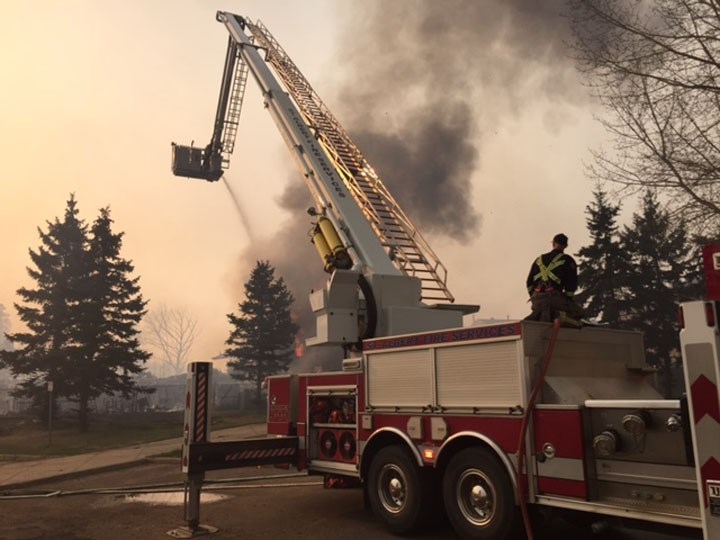How prepared are you if disaster strikes St. Albert?
Do you have a kit ready to grab if you need to evacuate? Have you prepared at least 72 hours worth of supplies for you, your family and even your furry friends?
“If you do it now, before you’re affected, it’s so much easier,” said Colleen Lamble, the city’s emergency management co-ordinator.
She and Percy Janke, who is the deputy chief administration and planning in the city’s fire services department, said when it comes to emergency preparedness, it starts with the individuals.
To that end, the city does have information online about planning for emergencies, including an Emergency Preparedness Guide. Information about emergency planning and an example of how to build a 72-hour kit will be part of the upcoming public safety open house on June 5 at St. Albert Centre.
But safety doesn’t begin and end with individuals. As can be seen with the fires impacting the Wood Buffalo region, forcing the evacuation of Fort McMurray, there is a need for governments to have plans in place.
“Corporately we’re doing a number of different things. We’re doing planning, we’re doing training, we’re doing exercises and we’re drafting policy,” Janke said. “We’ve done a lot of research on risks.”
Stakeholders involved in a hazard risk vulnerability assessment identified three key risks for St. Albert: severe summer storms, severe winter storms and structural fires within the community.
St. Albert’s plans for emergency don’t just focus on those, however. The tactic has been to take an “all hazard approach,” something Janke said is now the gold standard in emergency planning.
That means rather than having a separate plan for each potential kind of disaster, the plans are made with some of the common factors many emergencies could feature in mind.
Janke pointed out emergency management has changed over the years and the potential emergencies shift. For instance, a decade ago concerns about anthrax were big, Janke said.
Training and research occur on an ongoing basis, he said. There is also a lot of co-operation between municipalities and different emergency agencies, making sure a co-ordinated approach can be taken and consistent terminology used.
Emergency planning in the city is also about more than just emergency services like the firefighters or police.
“It’s not just about blue shirts,” Janke said. So training in St. Albert includes staff members from a variety of departments.
Emergencies often have two stages – the immediate emergency or disaster, and often the longer-term recovery.
So there has been training on everything from the Alberta Emergency Alert system to crisis communications. There’s even an emergency social services association.
“We have to be able to train all our people,” Janke said.
Some of the training St. Albert staff has undergone has been put to good use up in the emergency and provincial operations centres in recent weeks in Fort McMurray.
A new update of the city’s all-hazard plan will be in front of council in the coming months. Janke said it’s drafted and just needs a spot on the agenda.
Not all of the plan can be made public, he said.
If there is an emergency in St. Albert, staff will use the emergency alert system (available on television, radio and even mobile phone applications) as well as the city’s website and social media streams to update people.
“We’ll use all of those venues,” Janke said. Lamble pointed out sometimes even just cautionary notices are put up on the emergency alert site.
Be prepared
The city's Emergency Preparedness Guide can be found by searching "emergency preparedness" on www.stalbert.ca.




